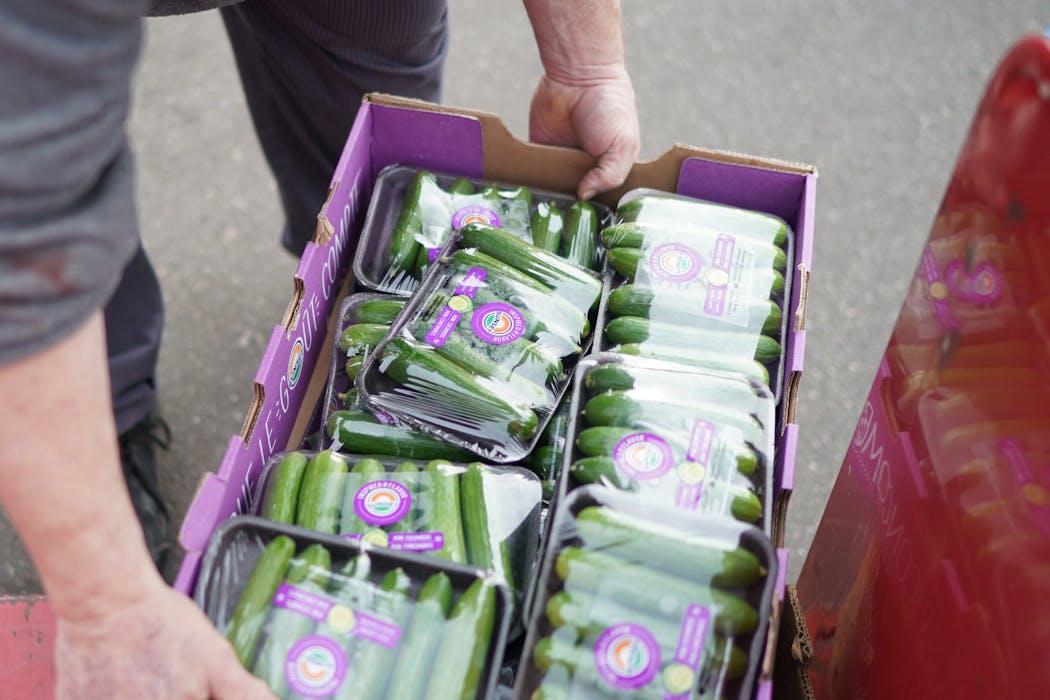Northern Minnesota is known for its scenic woods, lake resorts and cabins. But Brian Chaffee also sees often hidden signs of poverty that are affecting families and older adults.
About 30 miles north of Brainerd, Chaffee and other volunteers are dishing up free meals each week at a church in Pine River and a senior center in nearby Backus, feeding some 350 people in need, thanks to a new partnership with a Minneapolis-based nonprofit, Loaves & Fishes.
"It's great for the community to come together," he said. "We're making a difference."
While poverty and homelessness may be more visible in the Twin Cities, it's not a problem confined to urban areas. Across Minnesota, homelessness has reached a record high number. In 2018, the number of people visiting food shelves hit a record 3.4 million visits, according to St. Paul advocacy group Hunger Solutions.
"A lot of people in the [Twin] Cities don't think [poverty exists here], but there's a lot of poverty up north," said Simon Whitehead, a University of Minnesota Extension health and nutrition educator in Cass County and a former Minneapolis teacher. "It's certainly as impoverished as parts of Minneapolis."
When the federal government shutdown earlier this year threatened access to food assistance to thousands of Minnesotans, Chaffee, 58, a longtime resident and resort sous chef, sprang into action with the help of his family, volunteers and the nonprofit, Pine River-Backus Family Center. Thanks to local donations and $2,700 from Cass County, they bought a refrigerator and started the community meal program, partnering with Loaves & Fishes, which provides free food. Volunteers also collect leftover buffet food from nearby resorts and camps.
Since May, they've served up more than 8,500 meals in Backus and Pine River.
"The numbers are kind of staggering that there are that many people who come for the meals," said Cathy Maes, Loaves & Fishes' executive director.
Expanding outside Cities
Loaves & Fishes has long provided meals to people in need at churches and other sites in the Twin Cities, but has expanded to greater Minnesota within the past five years, adding sites in Aitkin, Barnum and Marshall.
"There's great need in greater Minnesota," Maes said. "That has been and will continue to be our focus: finding where hunger is. Do we need to go further out [from the metro] is the question."
She said the nonprofit is searching for foundation grants or public funding to help support the more expensive cost of delivering fresh food to rural towns.
In New Hope, the Food Group, formerly the Emergency Foodshelf Network, has added more greater Minnesota sites over the last few years for its "Fare for All" program, which provides discounted fresh fruit, vegetables and meat. From Little Falls to Red Wing, more cities outside the metro area now have sites, selling the discounted food to people who may not be eligible for food stamps but are still struggling to afford nutritious groceries.
This month, Second Harvest Heartland, one of several food banks in Minnesota, is increasing deliveries of fresh vegetables and fruits to two sites in southern Minnesota. Second Harvest, which delivers food to food shelves and other agencies in 59 counties in Minnesota and western Wisconsin, started a pilot program in July to increase deliveries of food to sites in Jackson, Fairmont and Mankato in the southern part of the state, thanks to a $2,000 grant from Feeding America. The nonprofit provided nearly 30 million pounds of food to food shelves and other agencies in greater Minnesota last year. It's also debuted a new app called MealConnect, both in the Twin Cities and in St. Cloud, to help facilitate companies, schools, restaurants and other places that want to donate leftover food to people in need.
'Every bit' gets used
On a recent morning at Loaves & Fishes' Minneapolis warehouse, Chaffee packed his van with cases of peaches, apples, six turkeys, 48 pounds of mashed potatoes and dozens of other items.
"We load it up," he said. "Every bit of it gets used up."
After the six-hour round-trip drive to pick up food, usually once a month, he and his wife, Kristy Miller, tap their experience working in dining for local resorts and camps to transform the donated goods into healthy gourmet-style meals — from fresh salads to pork carnitas.
"It's not a soup kitchen [atmosphere]; we try to make it as much of a restaurant [experience] as possible," he said.
There are other nonprofits in the region that provide meals and food to people in need, but it may require a longer drive to get there, Chaffee said, and some of the older adults who attend the weekly meals may not leave their homes much beyond the free meal.
The U's Whitehead said about 70% of the visitors to the weekly free meals are over 65. In fact, adults 65 and older are the fastest growing group of food shelf users in Minnesota, with the number of senior visitors increasing 50% from 2013 to 2018, according to Hunger Solutions.
In Cass County, with no low-income housing, no public transportation and no hospital, residents in need have few places to turn for help, Whitehead said. That's why the meals aren't just a place to get a bite to eat, but a spot to learn about services and connect with neighbors.
"A lot of them just can't make ends meet," he said. "There was really no community meal before this."
Olympian Kristi Yamaguchi is 'tickled pink' to inspire a Barbie doll

After 4 decades in music and major vocal surgery, Jon Bon Jovi is optimistic and still rocking
Rom-com author Emily Henry knows the secret to having a healthy relationship with love



